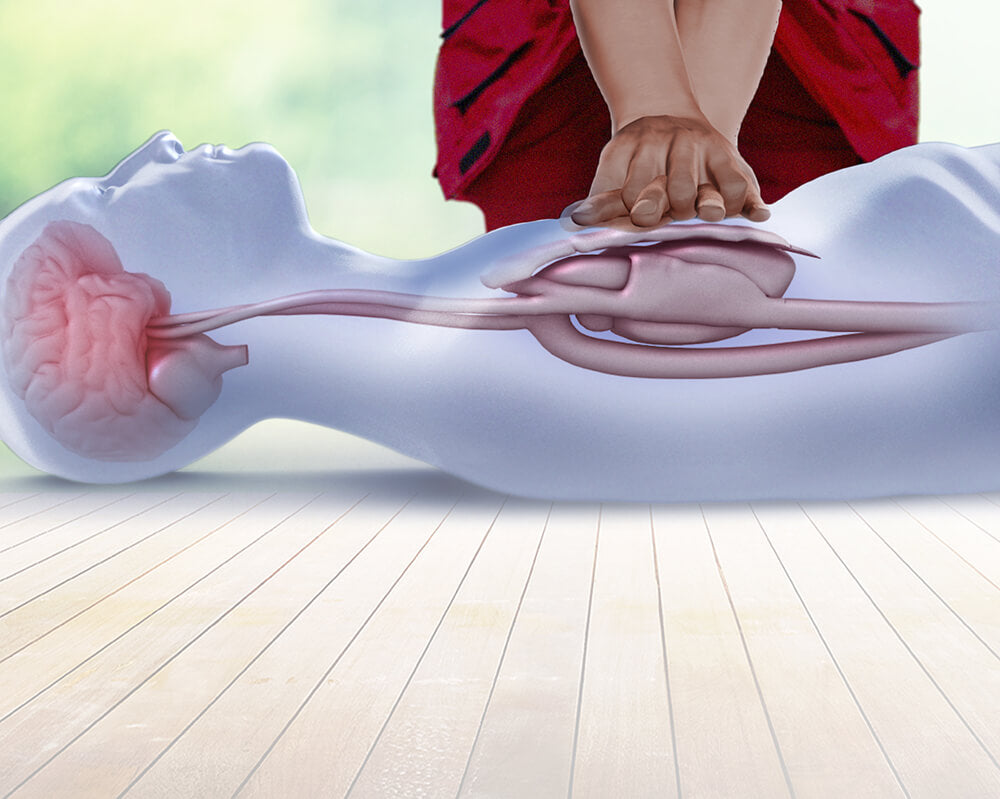Cardiopulmonary resuscitation (CPR)¹ is a life-saving technique that is used in emergencies when someone's breathing or heartbeat has stopped. It is a combination of chest compressions and rescue breaths that help to circulate oxygenated blood to the brain and other vital organs until professional medical help arrives. CPR can significantly increase the chances of survival for someone experiencing cardiac arrest².
Why is CPR important?
CPR is crucial because it helps to maintain blood flow and oxygenation to the body's vital organs, especially the brain. When the heart stops beating, the brain can suffer irreversible damage within minutes due to the lack of oxygen.³ By performing CPR, you can keep the blood flowing and provide oxygen to the brain, giving the person a better chance of survival.
How does CPR work?
CPR works by manually compressing the chest and providing rescue breaths to a person in cardiac arrest. The chest compressions help to circulate blood throughout the body, while the rescue breaths deliver oxygen to the lungs. This combination of compressions and breaths mimics the natural pumping action of the heart and lungs, keeping the person alive until advanced medical help arrives.
When should you perform CPR?
CPR should be performed immediately if someone is unresponsive and not breathing normally. It is important to start CPR as soon as possible to maximize the chances of survival. If there is another person available, they should call emergency services while you begin CPR.
How to perform CPR⁴:
1. Check for responsiveness: Shake the person gently and ask if they are okay. If there is no response, proceed to the next step.
2. Call for help: If there is another person nearby, ask them to call emergency services. If you are alone, call emergency services yourself before starting CPR.
3. Open the airway: Tilt the person's head back slightly and lift their chin to open the airway.
4. Check for breathing: Look, listen, and feel for signs of normal breathing. If the person is not breathing or only gasping, it is a sign of cardiac arrest.
5. Start chest compressions: Place the heel of one hand on the center of the person's chest, slightly above the lower half of the breastbone. Place your other hand on top of the first hand and interlock your fingers. Position yourself directly over the person's chest and push hard and fast, aiming for a depth of at least 2 inches. Perform compressions at a rate of 100-120 compressions per minute.
6. Provide rescue breaths: After 30 compressions, give two rescue breaths. Pinch the person's nose shut, place your mouth over their mouth, and blow until you see their chest rise. Each breath should last about one second.
7. Continue cycles of compressions and breaths: Repeat the cycle of 30 compressions followed by two breaths until professional help arrives or the person shows signs of life.
Remember, CPR is a life-saving technique that can make a significant difference in someone's chances of survival. It is important to stay calm, follow the steps, and continue performing CPR until professional help arrives.

References:
1. Cardiopulmonary resuscitation (CPR) | Better Health Channel
2. What is Sudden Cardiac Arrest (SCA)? | Cardiac X

